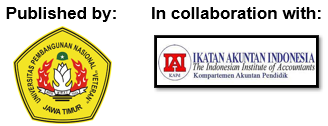
PUBLICATION ETHICS & MALPRACTICE
PLAGIARISM CHECK & AI WRITING POLICY
177 citations in Scopus-indexed journals (November 2025)
Before the review process and publication, all manuscripts will be checked for plagiarism and AI Writing using "Turnitin". If there are indications of plagiarism exceeding 30%, the manuscript will be rejected immediately. If there is an indication of plagiarism and AI-generated content between 15%-30%, we will send the manuscript back to the author to be revised for the plagiarized content. The plagiarism check for a published article is below 15%, with a maximum of 1% for each source.
AI Writing Policy
Authors must declare the use of generative AI in the manuscript preparation process upon submission of the paper.
JASF recognizes the potential of generative AI and AI-assisted technologies (“AI Tools”), when used responsibly, to help researchers work efficiently, gain critical insights fast, and achieve better outcomes. Increasingly, these tools, including AI agents and deep research tools, are helping researchers to synthesize complex literature, provide an overview of a field or research question, identify research gaps, generate ideas, and provide tailored support for tasks such as content organization and improving language and readability.
Authors preparing a manuscript for the JASF journal can use AI Tools to support them. However, these tools must never be used as a substitute for human critical thinking, expertise, and evaluation. AI technology should always be applied with human oversight and control.
Ultimately, authors are responsible and accountable for the contents of their work. This includes accountability for:
The use of AI Tools in the manuscript preparation process must be declared by adding a statement at the end of the manuscript when the paper is first submitted. The statement will appear in the published work and should be placed in a new section before the references list.
An example:
Title of new section: Declaration of generative AI and AI-assisted technologies in the manuscript preparation process.
Statement: During the preparation of this work the author(s) used [NAME OF TOOL / SERVICE] in order to [REASON]. After using this tool/service, the author(s) reviewed and edited the content as needed and take(s) full responsibility for the content of the published article.
The declaration does not apply to the use of basic tools, such as tools used to check grammar, spelling, and references. If you have nothing to disclose, you do not need to add a statement.
Please note: to protect authors’ rights and the confidentiality of their research, this journal does not currently allow the use of generative AI or AI-assisted technologies such as ChatGPT or similar services by reviewers or editors in the peer review and manuscript evaluation process. We are actively evaluating compliant AI Tools and may revise this policy in the future.
Published by: In collaboration with:
JASF (Journal of Accounting and Strategic Finance) is licensed under a Creative Commons Attribution 4.0 International License
